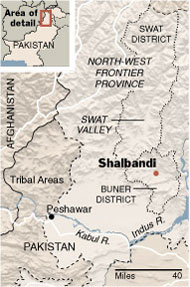Israel is increasing the pressure after Hamas sent rockets into Israel for three weeks or more.
Israel launched air strikes on Gaza for a second successive day on Sunday, piling pressure on Hamas after 229 people were killed in one of the bloodiest 24 hours for Palestinians in 60 years of conflict with the Jewish state …
Black smoke billowed over Gaza City after Israel bombed more than 40 security compounds, and uniformed bodies lay in a pile and the wounded writhed in pain at a graduation ceremony for new recruits hosted by Hamas.
There are three points to note in placing this operation in context. First, the violence is the latest in a cycle in which two peoples are in war over the same land. With regards to the “occupation,” the Hamas position is clever and has befuddled even the brightest of U.S. negotiators sent to quell the violence in this region.
A Hamas spokesman on Saturday vowed the group would not surrender in the face of IDF attacks in the Gaza Strip, and that Israel would not break its “resistance to the occupation.” The spokesman added that Hamas would not “raise a white flag” of surrender and would respond with all means available at its disposal.
Why would the Hamas spokesman use the term “surrender” when referring to this conflict over the “occupation?” Because it isn’t about Israel occupation of Gaza, but rather, Israeli occupation of Israel to which Hamas objects. And this is the crux of the issue that so many negotiators of the “two-state solution” seem to miss. Israel wants a two-state solution. The U.S. wants a two-state solution. Hamas doesn’t.
Second, Hamas Political Leader in Damascus Khaled Meshal has vowed a third intifada concerning his “Zionist enemy.” The Olmert administration has pursued a strategy of appeasement, and this stand-down has allowed Hamas to arm, organize, enhance ties with Iran, and in learn lessons from the Israel-Hezbollah war of 2006.
Hamas, once known for its suicide attacks inside Israeli cities, is no longer a small-time terrorist group, but a large guerrilla army that has well-trained forces deployed throughout the entire Gaza Strip.
Were the IDF to embark on a ground operation in Gaza, it would face an army of close to 20,000 armed men, among them at least 15,000 Hamas operatives. The rest are from Islamic Jihad, the Popular Front for the Liberation of Palestine and the Popular Resistance Committees.
Since the cease-fire went into effect in Gaza in June, Hamas has used the lull in action to fortify its military posts in the Strip and dig tunnel systems as well as underground bunkers for its forces. IDF estimates put the length of the tunnels at over 50 kilometers.
Hamas has also dug foxholes throughout the Strip to accommodate anti-tank missile units, and prepared massive bombs, which have been placed on the main access roads into Gaza.
In addition to its homemade Kassam rockets, Hamas has smuggled into Gaza a number of anti-aircraft cannons and several shoulder-to-air missiles. It also a large number of anti-tank missiles that, if used correctly, could wreak havoc on Israeli armor in the event of a ground operation involving tanks and armored personnel carriers.
It also has Special Forces – commando forces and units with expertise in rocket fire, mortar attacks and roadside bombs.
“Hamas has learned a lot from Hizbullah and has adopted many of the Lebanese group’s tactics which were used successfully against the IDF in the Second Lebanon War,” one IDF official said.
Since Israel’s unilateral disengagement from the Gaza Strip in the summer of 2005, Hamas has created a military with a clear hierarchy, led by Hamas “chief” Ahmed Ja’abri …
Hamas has split the Gaza Strip into five sections corresponding to five different brigades in the north, center, Gaza City, and two brigades in the south. Each brigade has a commander as well as several battalions under its command.
The third point is the most important, as it explains the root rather than the proximate causes. Palestinian Authority President Mahmoud Abbas has charged that Hamas could have prevented the bloodshed. “We spoke to them and told them ‘Please, we ask you not to end the cease-fire. Let it continue,'” Abbas said during a joint press conference with Egyptian Foreign Minister Ahmed Aboul Gheit. “We want to protect the Gaza Strip. We don’t want it to be destroyed.”
True enough, this analysis misses the final and most important point. Hamas was either going to be supplanted and subsumed into a larger Salafist movement within Palestine or evolve into a sort of symbiosis with that movement. Hamas has come to be rivaled by a radical Salafist movement within Palestine that is financially supported by oil-rich sheikhs in Saudi Arabia, and movement against Israel was a necessity given the predispositions to armed violence within the new evolved organization.
Only an organization committed to violence will place ordnance in the same locations as residences and schools in total disregard for the safety of women and children. When the media value of the deaths of children has become more important than their protection, the evolution to a Hezbollah-like viciousness and totalitarianism is complete.
Israel is attacking Gaza because there is no other choice. As for the incoming Obama administration and Clinton State Department, our prediction that Hamas will begin its attacks on Israel again appear to be spot-on but a bit late, with Hamas rudely not even waiting until Clinton took the reins at State. It remains to be seen if the incoming administration still believes in the two-state solution. Radicalism is all that is left in Palestine due to the politics of appeasement for so many years.




